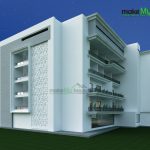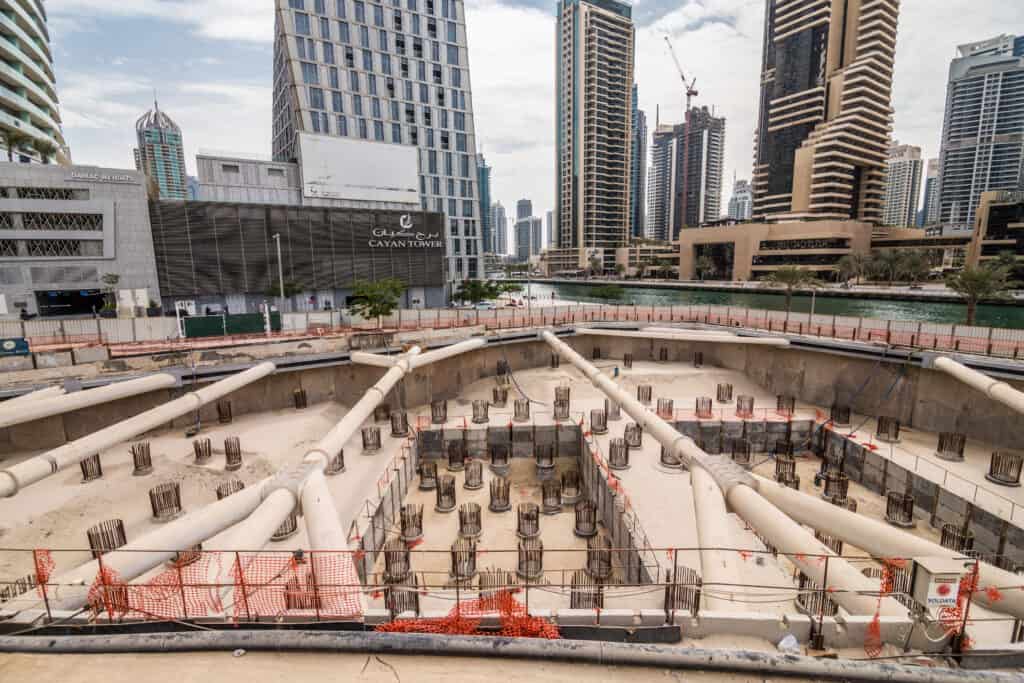Raw material in construction refers to the materials used to build structures, such as buildings, bridges, roads, and other infrastructure. These materials can be natural or synthetic and can vary depending on the type of structure being built, as well as the location and climate.
Sugar, organic materials, vegetable growth, and other substances may be deleterious to bricks, stone, concrete, or steel. Potable water is generally considered satisfactory for mixing as a raw material in construction. The pH value of water should be not less than 6.
Effects of Bad Quality Water on Cement Concrete
It has been observed that certain common impurities in water affect the quality of mortar or concrete. Many times in spite of using the best raw material in construction i.e. cement, coarse sand, coarse aggregate, etc. in cement concrete, the required results are not achieved. Most Engineers/Contractors think that there is something wrong with cement, but they do not consider the quality of water being used. Some bad effects of water-containing impurities are following.
The presence of salt in water such as Calcium Chloride, Iron Salts, inorganic salts and sodium, etc. is so dangerous that they reduce the initial strength of concrete and in some cases, no strength can be achieved. There is a rusting problem in the steel provided in RCC.
The presence of acid, alkali, industrial waste, sanitary sewage, and water with sugar also reduces the strength of concrete as a raw material.
The presence of silt or suspended particles in water has an adverse effect on the strength of concrete.
Presence of oil such as linseed oil, vegetable oil, or mineral oil in water above 2 % reduces the strength of concrete by up to 25 %.
Presence of algae/vegetable growth in water used for mixing in cement concrete reduces the strength of concrete considerably and also reduces the bond between cement paste and aggregate.
Treatment of Water
It is advisable that water should be tested in the lab and if found unsatisfactory, it should be treated according to the directions of the laboratory. It is generally observed that groundwater has some quantities of salt. In case of small work or in a situation where good water is not available, salty water must be treated with HCL @ 10 ml for 100 liters of water.
Quantity of Water
Water is an important component of mortar or concrete as a raw material in construction. The quantity and quality of water have much effect on the strength of mortar and cement concrete. It has been observed many times that in spite of using the best raw materials, cement, and tested water; concrete does not provide the required results. Engineers/contractors think that there is something wrong with cement, but they do not consider the water-cement ratio or quantity of water added to the mix.
When the water is mixed in a mortar, it reacts with cement and forms a binding paste that fills small voids in the sand. This creates a close cohesion of sand particles and cement. In the case of cement concrete, the voids formed between sand and coarse aggregate get filled with the paste forming a cohesive substance/concrete. The required quantity of water is used to prepare mortar or concrete, but in practice, it is seen that more water is mixed to make the mix workable. This is a bad practice and additional water weakens the strength of cement paste. Extra water also weakens adhesive quality.
Disadvantages of mixing too much water in mortar and concrete
The water occupies space in sand and it evaporates to create voids. Moreover, the water voids will be more and this will reduce the density, strength, and durability of mortar or concrete.
When more water is used in concrete excess water brings a mixture of excess cement paste with water floating on the surface. This material forms a thin layer of chalky material on the surface which reduces proper bonding with the second layer of cement concrete in the case of water tanks and dams etc. This will affect the strength of the concrete.
When more water is used, the cement slurry starts coming out from the cement concrete mix. The excess slurry formed by water and cement comes out through shuttering joints. This makes concrete less cement and reduces the strength of concrete.
When more water is used, proper compaction is not achieved and there is bleeding, large voids, and more shrinkage, less durability, and less strength.
When more water is mixed in cement concrete, the problem of segregation of material is faced at the time of laying the mix. As a result of Coarse Aggregate and cement paste separate from each other.
Hence strict control should be kept on water-cement ratio as araw material in construction for preparing the mortar or concrete for qualitative finish/ strength.
Quantity of Water for One Bag Mix
Approximate 32 liters of water is required where the ratio 1:2:4 of cement concrete is used.
Approximate 30 liters of water is required where the ratio 1:1.5:3 of cement concrete is used.
Water for Cement Concrete
Water for ordinary cement concrete mix should be equal to 5% by weight of aggregate and 30% by weight of cement.
The actual quantity of water required to be added to the field depends on the availability of aggregate and surface water present in the aggregate.
It should be calculated by slump test.
Generally for vibrated concrete, the quantity of water is less by 20%.
Water Reducing Admixtures
The water reducer admixture improves the workability of concrete/mortar for the same water-cement ratio. The determination of workability is an important factor in testing concrete admixture. Rapid loss of workability occurs during the first few minutes after mixing concrete and gradual loss of workability takes place over a period from 15 to 60 minutes after mixing. Thus relative advantages of water-reducing admixture decrease with time after mixing. These admixtures increase setting time by about 2 to 6 hours during which concrete can be vibrated. This is particularly important in hot weather conditions or where the nature of construction demands a time gap between the placements of successive layers of concrete.
Advantages
It can reduce 10% of water consumption.
It can improve the mixture of cement concrete for workability.
Compression strength improves by more than 15 %.
It can reduce the initial stage of cement heat hydration by a large margin.
It has no function of corrosion reinforcing bars.
It increases workability, density, and strength without increasing the quantity of cement.
Hence in the area where there is less availability of water and the water is carried from long distances for construction work, the water-reducing admixture is most beneficial for cement concrete work as it saves water up to 10%. It also increases the strength of cement concrete with the same quantity of cement.
Make My House provides all architectural and construction services with the best practices for your site safety and efficient construction process.












2 thoughts on “Raw Material Arrangements- Water For Construction”